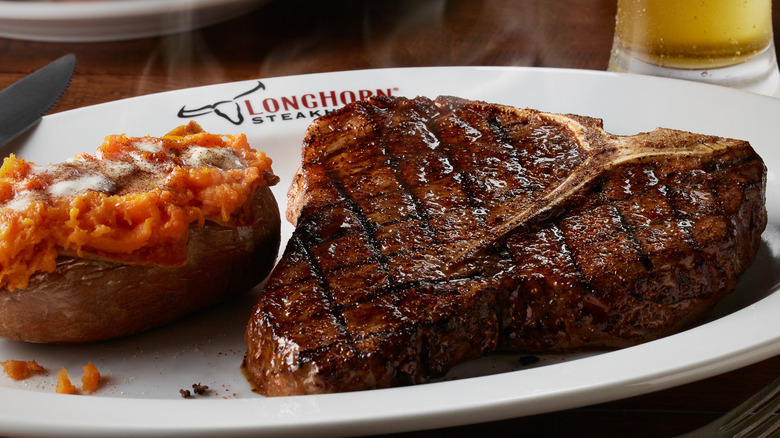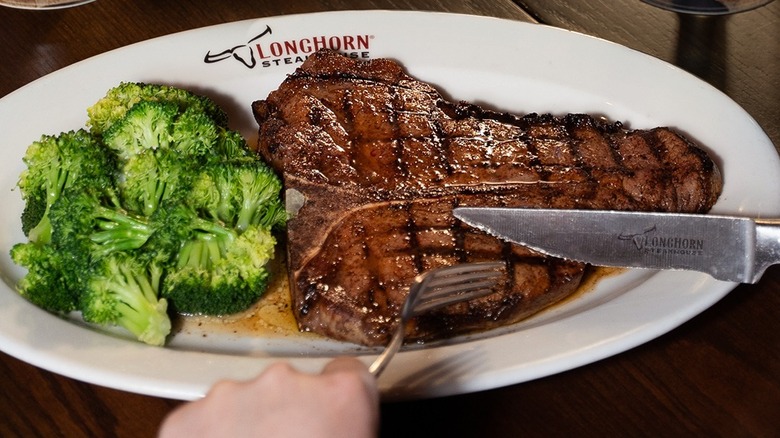How Longhorn Steakhouse Keeps Its Steaks So Cheap, According To The CEO
When it comes to chains, LongHorn Steakhouse manages to maintain low prices while still offering steaks that taste far better than homemade. But if it's not sacrificing quality, how does it manage to stay so affordable? In its second and fourth quarter earnings calls, Rick Cardenas, CEO of Darden Restaurants, LongHorn's parent company, said the answer is investment.
"LongHorn has made investments over the years, even before COVID, to improve the quality of [its] food and to improve the execution of that food," Cardenas said. "And so things that we've done over those times of making sure that our Grill Masters are well-trained to cook the steaks exactly as the guests like it, and that showed up in our record steaks grilled correctly score this quarter."
It's no secret that little details, like LongHorn offering fewer appetizer options than other steakhouse chains, can increase profit margins, thereby creating more opportunities for investment. But Cardenas says that putting that investment directly into the quality of customers' plates is something they notice.
Customers aren't the only ones reaping the rewards of these investments. Between 2024 and 2025, LongHorn's fourth quarter profits increased by $20.6 million, ending 2025 with a $71.1 million increase in annual sales [per Darden Concepts, Inc.]. From major upgrades in kitchen equipment to a focus on everyday affordability, LongHorn has maintained strong profitability at a time when many chain restaurants are struggling.
How has LongHorn invested in its restaurants?
While some businesses try to capture new customers through trendy social media campaigns and influencer partnerships, LongHorn chose to keep things simple by investing in its actual brick-and-mortar establishments. By redirecting marketing funds into food quality, LongHorn saw a 7.5% increase in same-store sales in 2025 (per Ken Kuscher).
It turns out that the chain's special parmesan crust isn't the only way to level up almost any entree at LongHorn Steakhouse. Increases in both quality and quantity left customers feeling like they truly got their money's worth, improving word-of-mouth and customer loyalty. Though reallocating marketing budgets can be risky, increasing the overall value of each customer order proved to be as effective a form of advertising as any ad campaign. "Reinvestments can take many forms," Rick Cardenas said in the earnings call. "And one of them could be pricing even lower than inflation."
There's a clear correlation between happy employees and satisfied customers, especially in the service industry. LongHorn's investments sharply reduced employee turnover — another ripple effect showing how prioritizing quality yields strong returns across the board. With happier employees, larger portions, and comparatively lower prices, LongHorn has created an all-around better dining experience that keeps customers coming back.


